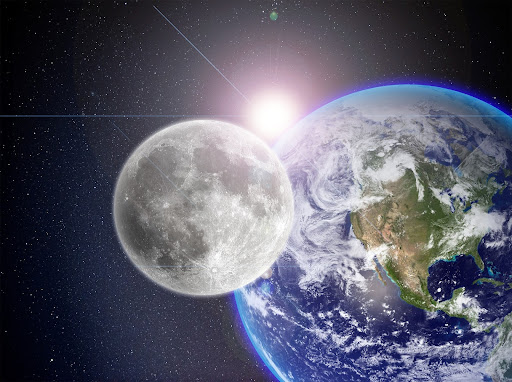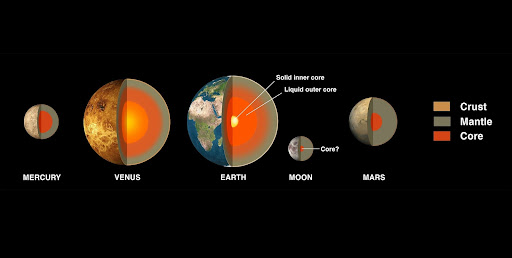
The Earth is a complex sphere flying through space, which is life sustaining. Our planet has so many different places that sustain all kinds of life. If our individual solar system is any indication, that doesn’t have a very high chance of happening often. Earth completes one rotation every 23.9 hours and takes 365.25 days to complete one trip around the Sun. To keep our calendars consistent with our orbit around the Sun, every four years we have a leap year, adding a day in February. Earth’s axis is tilted 23.4 degrees causing our cycle of seasons. One hemisphere is tilted toward the Sun, and the other is tilted away. The one tilted toward the Sun will have summer, the other will experience winter. Six months later, the situation will reverse. During spring and fall begin, both hemispheres receive roughly equal amounts of heat from the Sun. What lies beneath the weather and things we see? How are we able to breathe? How does our only natural satellite affect everything?
What is Earth Made of?
Earth is the biggest of the terrestrial planets and the fifth largest planet overall. Earth’s core is made of nickel and iron and temperatures can reach 9,800 degrees F. The Mantle is Earth’s thickest layer and is a mixture of molten rock containing iron, magnesium, aluminum, oxygen and other minerals. The rocky surface layer of Earth’s crust is mainly covered with water. Earth’s crust runs around 19 miles deep on average on land.
Earth’s atmosphere is nitrogen, oxygen, and small amounts of other elements. The atmosphere also contains water vapor, along with traces of dust particles, pollen, plant grains and other solid particles. The Earth is an average distance of 93 million miles, or one astronomical unit, from the sun. It takes around eight minutes for light from the Sun to reach the Earth. The highest temperature ever recorded on Earth’s crust was 136 degree F in the Libyan desert. The coldest temperature was -126 degrees F at Vostok Station in Antarctica. Even though Earth is the only habitable place in our solar system, that hasn’t stopped humans from wanting to leave and explore our only natural satellite.

What is Earth’s only Natural Satellite?
Earth’s only natural satellite is simply called “the Moon” because people didn’t know other moons existed until Galileo Galilei discovered four moons orbiting Jupiter in 1610. Earth is the only planet that has a single moon. Our Moon is the fifth largest moon in our solar system. Some moons are bits of rock that were captured by a planet’s gravity, but our Moon is likely the result of a collision billions of years ago. Scientists speculate when Earth was a young planet, a large chunk of rock smashed into it. The resulting chunks clumped together and formed our Moon. Our Moon is the brightest object in the night sky. The moon is extremely important because it stabilizes our planet, making our climate more predictable. The Moon is an average of 238,855 miles away from Earth.
The Earth and Moon’s rotations are so in sync we only see one side of the Moon. Humans didn’t see the far side of the Moon until a Soviet spacecraft flew past in 1959. Twenty-four humans have traveled from the Earth to the Moon. Twelve had the privilege of walking on its surface, the last in 1972. NASA currently has three robotic spacecraft exploring the Moon. In the near future, NASA hopes to set up a permanent base on the Moon. This base will hopefully be a step towards humans exploring Mars. Some believe Mars could have possibly once had life. Find out what we know about Mars on the next installment of Five Minute Planetarium: Mars.
Written by: Erinn Malloy
